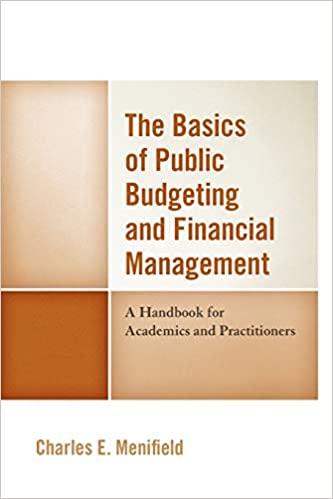Question
MONTHLY Expected Returns, Standard Deviations, and Correlations July 1990 through December 2014, 294 months, returns are total stock market returns for the region) Correlation with:
| MONTHLY Expected Returns, Standard Deviations, and Correlations July 1990 through December 2014, 294 months, returns are total stock market returns for the region) | |||||||
|
|
|
| Correlation with: | ||||
| Asset Class | Expected Return | Std. Deviation | US | Japan | Asia (non-Japan) | Europe |
|
| US | 0.89% | 4.34% | 1.00 | 0.41 | 0.71 | 0.79 | |
| Japan | 0.21% | 5.97% | 0.41 | 1.00 | 0.47 | 0.50 | |
| Asia (non-Japan) | 0.96% | 6.01% | 0.71 | 0.47 | 1.00 | 0.75 | |
| Europe | 0.74% | 5.04% | 0.79 | 0.50 | 0.75 | 1.00 | |
For the three questions below, assume a risk-free rate of 0.24% per month.
4. Suppose you are currently invested 100% in U.S. stocks and you CANNOT short:
- Find the portfolio that maximizes expected return if you want the same risk of U.S. stocks.
- What is the expected return of this portfolio and what are the portfolio weights?
5. Suppose you CANNOT short:
- What is the expected return and standard deviation of the tangency portfolio? What are the portfolio weights?
- Does JAPAN have any part in the tangency portfolio? If yes, why is JAPAN a useful part of the portfolio? If not, why is JAPAN not part of it?
6. Suppose you CANNOT short:
- Now assume that the expected return for Japanese stocks is 0.96% per month (the same as Asia Pacific). What is the expected return and standard deviation of the tangency portfolio? What are the weights?
Step by Step Solution
There are 3 Steps involved in it
Step: 1

Get Instant Access to Expert-Tailored Solutions
See step-by-step solutions with expert insights and AI powered tools for academic success
Step: 2

Step: 3

Ace Your Homework with AI
Get the answers you need in no time with our AI-driven, step-by-step assistance
Get Started


